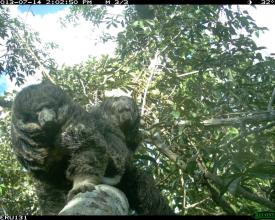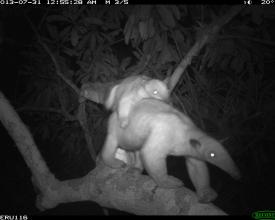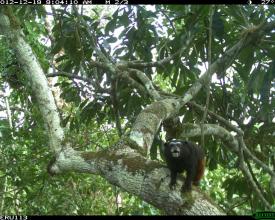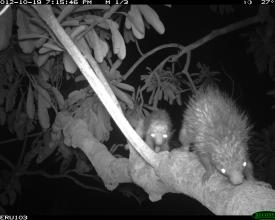Connecting habitats for arboreal species by using canopy bridges
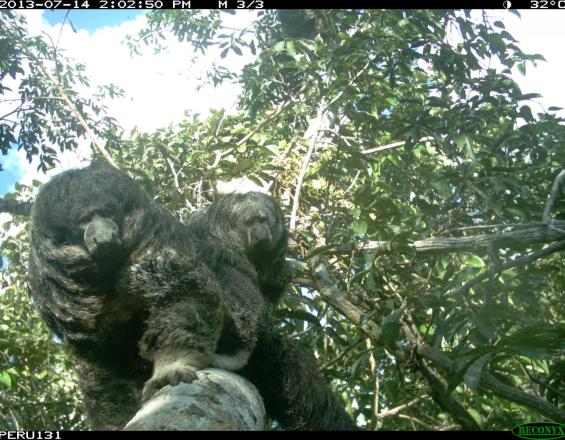
Tropical tree-dwelling mammals such as monkeys, kinkajous and opossums depend on complex treetop highways to get to food, potential mates and avoid predators on the ground. In one of the largest-ever canopy-based camera-trapping studies to date, Smithsonian Conservation Biology Institute scientists and partners found that when a pipeline clearing in Peru threatened those highways, leaving natural bridges, or connecting branches, for arboreal species really reduced the severity of that impact.
“Here we partnered with industry to identify a problem, implemented a proposed solution and used an innovative camera trapping technique to test the solution. The results plainly and powerfully show the effectiveness of a simple way to reduce impacts of human activity on biodiversity—a conservation biologist’s dream,” described one of the researchers. These results are now in the process of being incorporated into Peruvian legislation.
Impacts
Camera-trap photos showed that over the course of a year of monitoring, arboreal mammals crossed the pipeline clearing only 16 times on the ground. Meanwhile, there were more than 3,000 arboreal animal crossings on the natural canopy bridges left over the pipeline clearing. The rate of mammal crossings in the bridges was more than 100 times higher than on the ground, and 25 arboreal mammal species used the natural bridges, while only six of those species crossed on the ground.
The results of this research are now in the process of being incorporated into Peruvian legislation. Companies engaged in infrastructure development may be required to leave natural canopy bridges over projects in forests across the country, thereby minimizing forest fragmentation.

